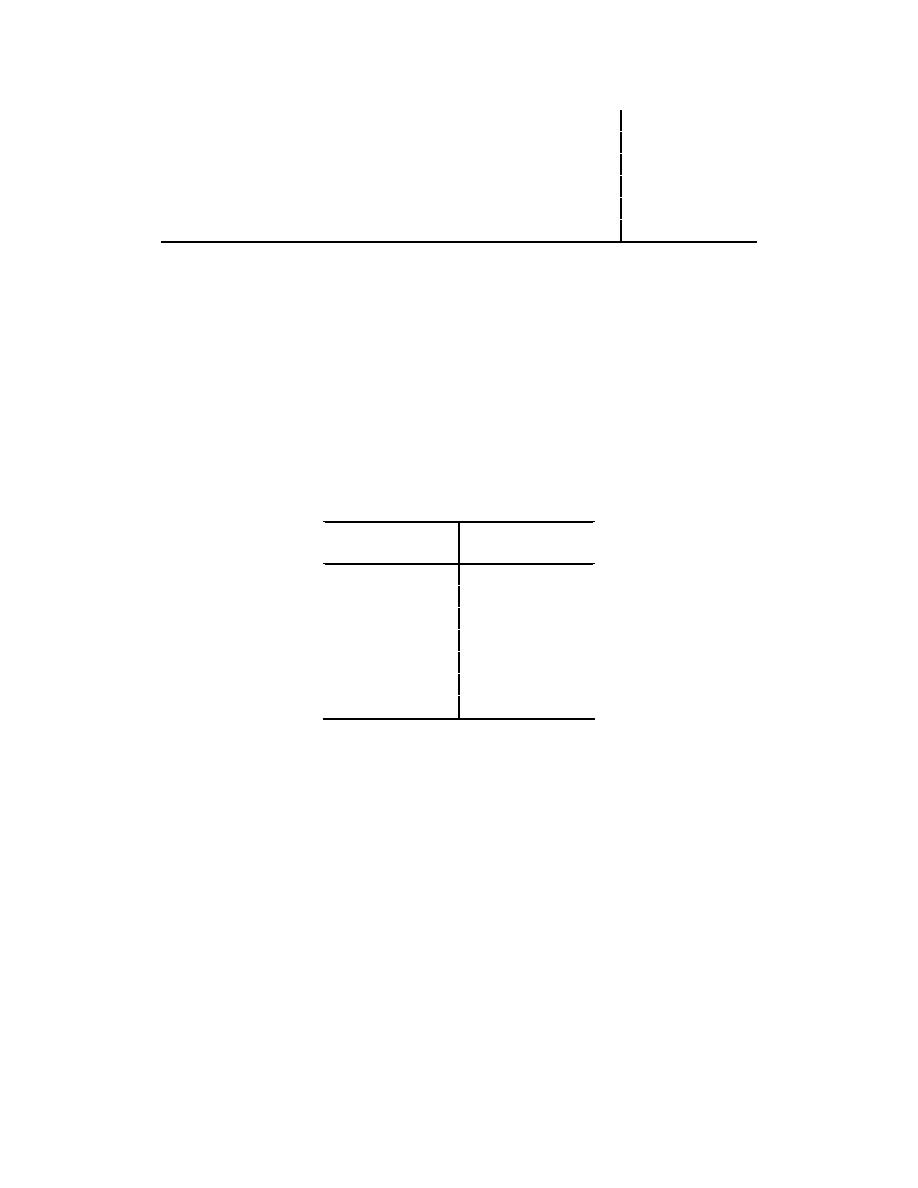
CEMP-ET
TI 804-11
30 November 1998
Passenger Car
7.3 (24.0)
4.7 (15.3)
Single Unit Truck
12.8 (42.0)
8.7 (28.4)
Intermediate Semi-trailer
12.2 (40.0)
6.1 (19.9)
Large Semi-trailer
13.7 (45.0)
6.1 (19.8)
Single Unit Bus
12.8 (42.0)
7.1 (23.2)
Motor Home
12.8 (42.0)
8.7 (284)
2-3. ACCESS AND SERVICE DRIVES. Design site entrances and exits, services drives, and
other areas with special requirements (e.g., parking lots or loading docks) to accommodate the
largest vehicle that will use the facility. This procedure should assure that traffic safety will be
accommodated.
a. Spacing. Locate access drives according to the following spacing guidelines:
(1) Maintain 61 m (200 ft) or more between access drives on arterial roads. Table 2-3
provides acceptable minimum spacing when frontage along an arterial road is limited.
Table 2-3. Minimum Driveway Spacing for Streets serving more than
5,000 Vehicles per Day.
Arterial Speed
Minimum
kph (mph)
Separation m (ft)
32 (20)
25.9 (85.0)
40 (25)
32 (105.0)
48 (30)
38 (125.0)
56 (35)
45.8 (150.0)
64 (40)
56.4 (185.0)
72 (45)
70.2 (230.0)
81 (50)
83.9 (275.0)
(2) Maintain a minimum spacing of 366m to 457m (1,200 to 1,500 ft) between a
signaled drive and adjacent signaled intersection. If the signaled drive is a T-intersection, 183m
(600 ft) is an acceptable minimum spacing when frontage is limited.
(3) Coordinate drive signals within 762m (2,500 ft) of adjacent signals.
(4) Maintain a minimum spacing of 10.5m to 15.5m (35 to 50 ft) on low-volume (5,000
vehicles per day), low-speed (48 kph (30 mph)) roads.
b. Corner Clearances. Access drives near major intersections adversely affect traffic
operations. They may result in unexpected conflicts with vehicles turning at the intersection.
Maintain a minimum clearance of 15.2m (50 ft) between access drives and major intersections.
c. Sight Distances. Provide safe sight distance for vehicles entering and exiting an access
drive. This sight distance increases according to the design speed of the through road. The
relationships of speed to sight distances are provided in table 2-4 and illustrated in figure 2-2.
When a safe sight distance cannot be met, consider the following alternatives:
(1) Removal of sight obstructions.
3



 Previous Page
Previous Page
